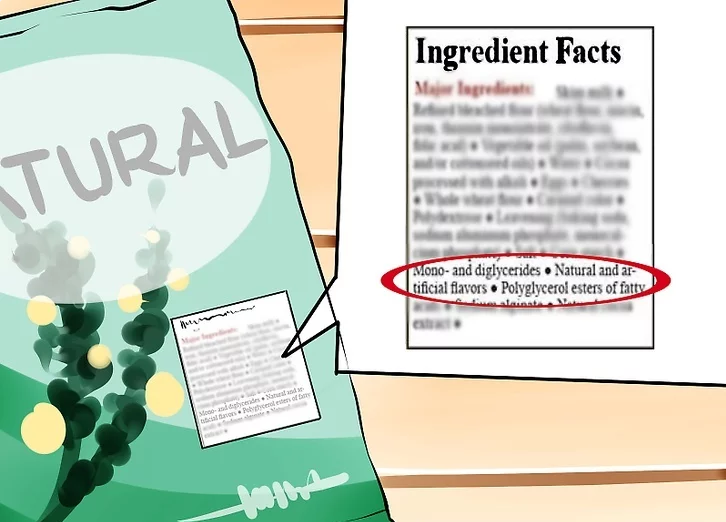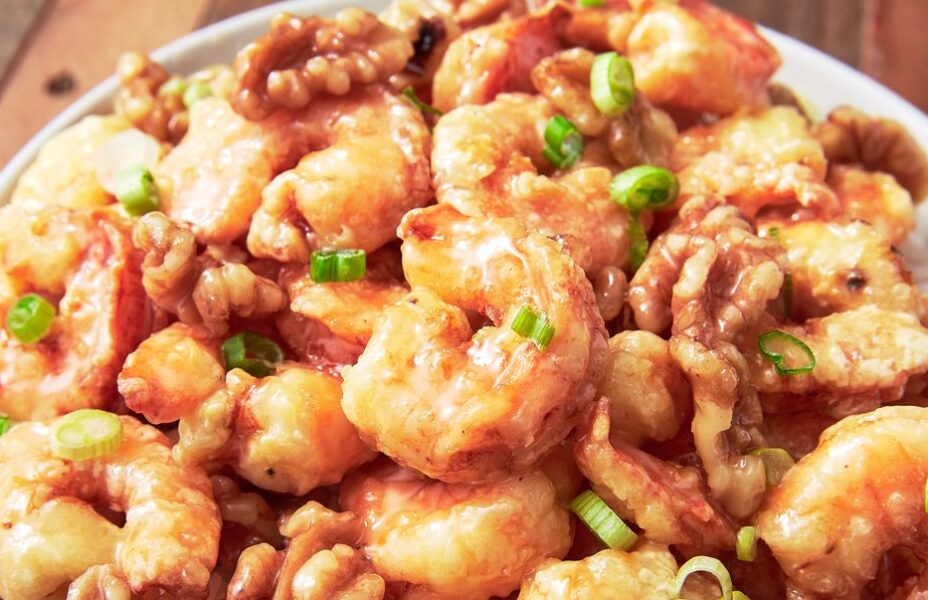If you are trying to avoid preservatives in your diet, it is essential to learn how to identify them. Food manufacturers have an array of preservatives and additives that they add to foods for a host of reasons. Many times, food preservatives are commonly added to slow or prevent undesirable spoilage, discoloration, flavor loss, bacterial growth and mold or microbial growth. Although many preservatives have gotten a bad reputation, they do keep our foods safe from very harmful bacteria like botulism. Read labels carefully and work towards being an informed consumer so you can avoid foods or food products with preservatives you don’t want to consume.

Learning How to Identify Preservatives
1.Review the “front of pack” labeling. When you’re shopping and are on the lookout for preservatives, there are a variety of places on food packaging that can help you determine whether or not you want to buy that product.
.100% organic foods are also not always preservative free. By legal definition, only 95% of the ingredients or additives of a 100% organic food need to be organic. In addition, there are 45 additives that are actually permitted in organic foods. These are there as they have been deemed as “essential” to the safety of the foods.
.There are some phrases like “all natural” or “natural” that do not really have a legal definition within the FDA. Many food companies use this terminology for marketing and advertising purposes. However, there are plenty of “all natural” foods that contain a variety of added sweeteners, natural flavors and preservatives. Don’t get fooled by this type of labeling.
.2.Scan the entire ingredient list. The ingredient list is required and all food manufacturers need to include an ingredient list on their products. This is where you will find out what types, if any, of preservatives are added.
.The FDA requires all food manufacturers to list every single ingredient contained in a food product on the ingredient label. When reviewing the ingredient list, know that the first ingredient listed is the 1 found in the highest quantity. The last ingredient listed is found in the least or smallest quantities in the product.
3.Make note of common preservatives and those you want to avoid. Although there are hundreds of food additives that function as preservatives, some of the most common appear in a wide variety of foods. Once you learn to identify common preservatives you can quickly avoid selecting foods with those preservatives in the future. You can also make a list or note certain additives, colorings or preservatives that you specifically want to avoid. You may also want to make a list of the foods or types of foods they are typically found in and avoid them as well. Some common preservatives and their uses are:
.Propionates, ascorbic acid, and nitrates are all used to preserve and maintain freshness in foods.
.Glycerine is a humectant that keeps foods moist and prevents them from drying out.
.Xantham gum is a popular thickener in foods.
.Pectin and agar agar are used also used to thicken and stabilize different foods.
.Modified corn or food starch helps increase the bulk of a food without disturbing its nutritional value.
Shopping for Foods with Fewer Additives

1.Choose whole, unprocessed fruits and vegetables. The produce section will have the most whole foods that are minimally processed.
.Typically fresh fruits and vegetables do not contain. Stock up on these foods to help decrease or avoid additives.
.Note that not all items in the produce section will be preservative-free. Items like pre-washed, pre-cut fruits and vegetables may have some additives to maintain freshness or color.
.Raw nuts and seeds are also good options for avoiding preservatives. These may be available in bulk bins near the produce or in a separate bulk section of your store.
2.Purchase meat and seafood that is minimally processed. The meat, deli, and seafood counter will have a bigger range of processed items compared to the produce section.
.Try to stick to meats that are uncooked and in their more natural state, such as raw, whole chicken, raw beef or raw fish.
.For example, instead of pre-cooked chicken breasts, purchase an entire chicken or chicken breasts raw and prepare them yourself. Or instead of buying turkey deli meat, purchase a turkey breast to roast and slice yourself.
.Also, don’t always forego frozen items. Many times frozen meats and seafood do not contain additives because the freezing keeps them fresh and prevents spoilage.
3.Be wary of the dairy case. The dairy and egg case is another area that has a wide range of processing and amounts of additives.
.Eggs typically will be preservative and additive free as you cannot add anything to shelled eggs. They do range in what the chickens are fed and how they were raised. Also, liquid eggs and liquid egg whites may contain additives.
4.Most other frozen foods will be processed and contain additives. Minimize these in your diet or avoid them all together if desired.
5.Be mindful when shopping in the aisles. It will be difficult to purchase only foods from the perimeter to the store. When purchasing items from the inner aisles, be careful about what you choose.
.If you’re going to buy canned vegetables or meats, choose those with no salt added. Canning does a great job at preserving foods and therefore many of these items contain minimal additives.
For items like salad dressing, condiments or sauces, read the labels for those that contain more natural ingredients and less additives. This is a popular request by consumers, so with a little extra time with the labels, you should be able to find appropriate substitutes.
Eating and Preparing Meals without Preservatives.
1.Avoid heavily processed foods. Many heavily processed foods will contain additives. Minimize or avoid these foods to help you reduce the amount of additives you consume throughout the day.
.Top contenders for highly processed foods include: frozen meals, canned meals, deli meat, breakfast meats and processed meats, condiments, sauces and dressing, sweetened beverages, fast foods and chips/crackers. Many sliced breads contain lots of preservatives as well.
.Foods that spoil quickly or that are minimally packaged are unlikely to contain preservatives. Buy fresh, unprocessed produce and natural whole foods to reduce the time you spend reading ingredient lists.
2.Cook from home and make items from scratch. If you want to get rid of additives in your diet, you’ll most likely have to start making some foods from scratch or homemade. Making items yourself allows you to control what goes into your foods and meals. You can control the calories, sugar, fat, salt and the amount of additives your foods contain. Some examples of items you can make yourself include: salad dressings, sauces or marinades, bread, your own frozen vegetables or fruit, or your own “freezer meals” made with homemade items.
Kam’s court, a chinese restaurant in Charmhaven, which was established in 1992. A friendly, family restaurant that has always been a good party place for family gatherings. We provide delicious and popular Chinese cuisine and are licensed. We invite you to come and enjoy our warm and friendly hospitality.






